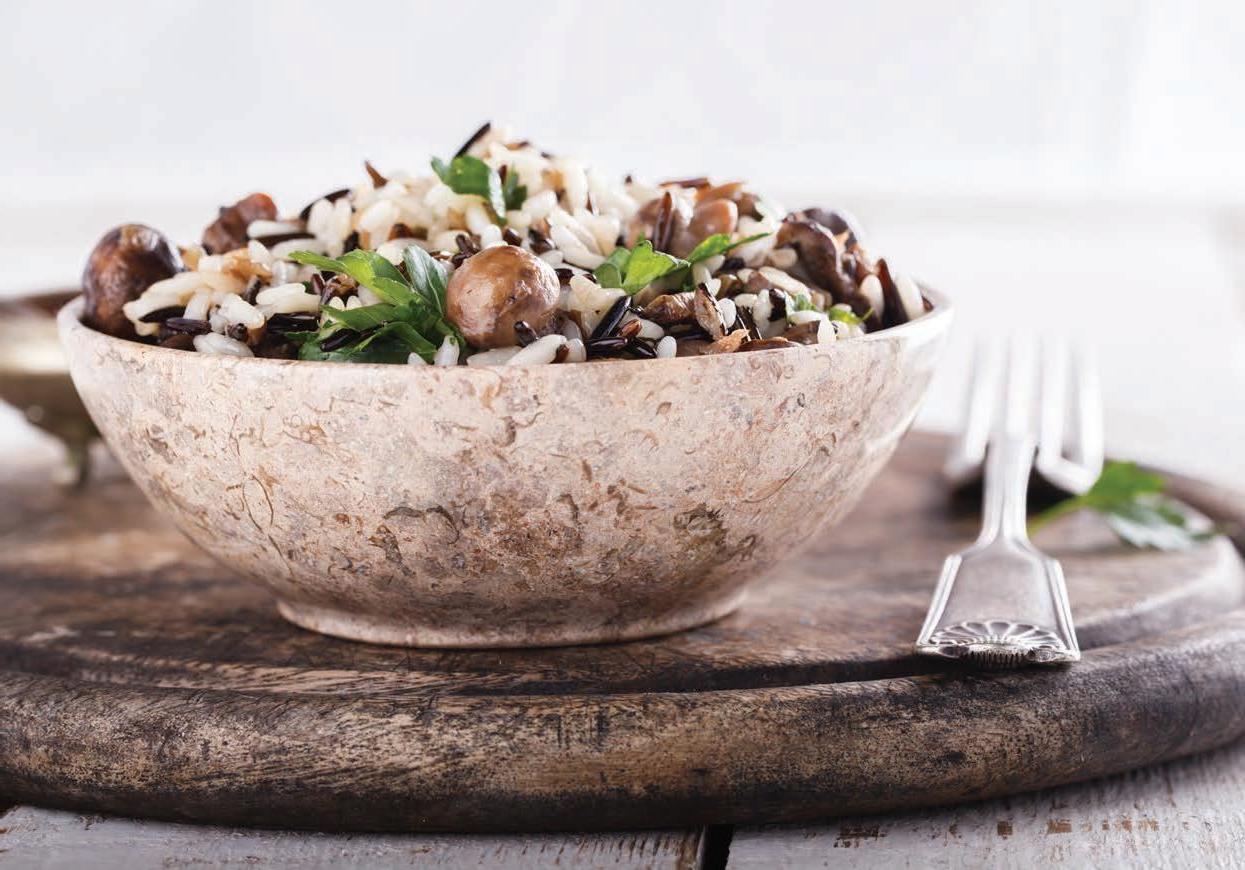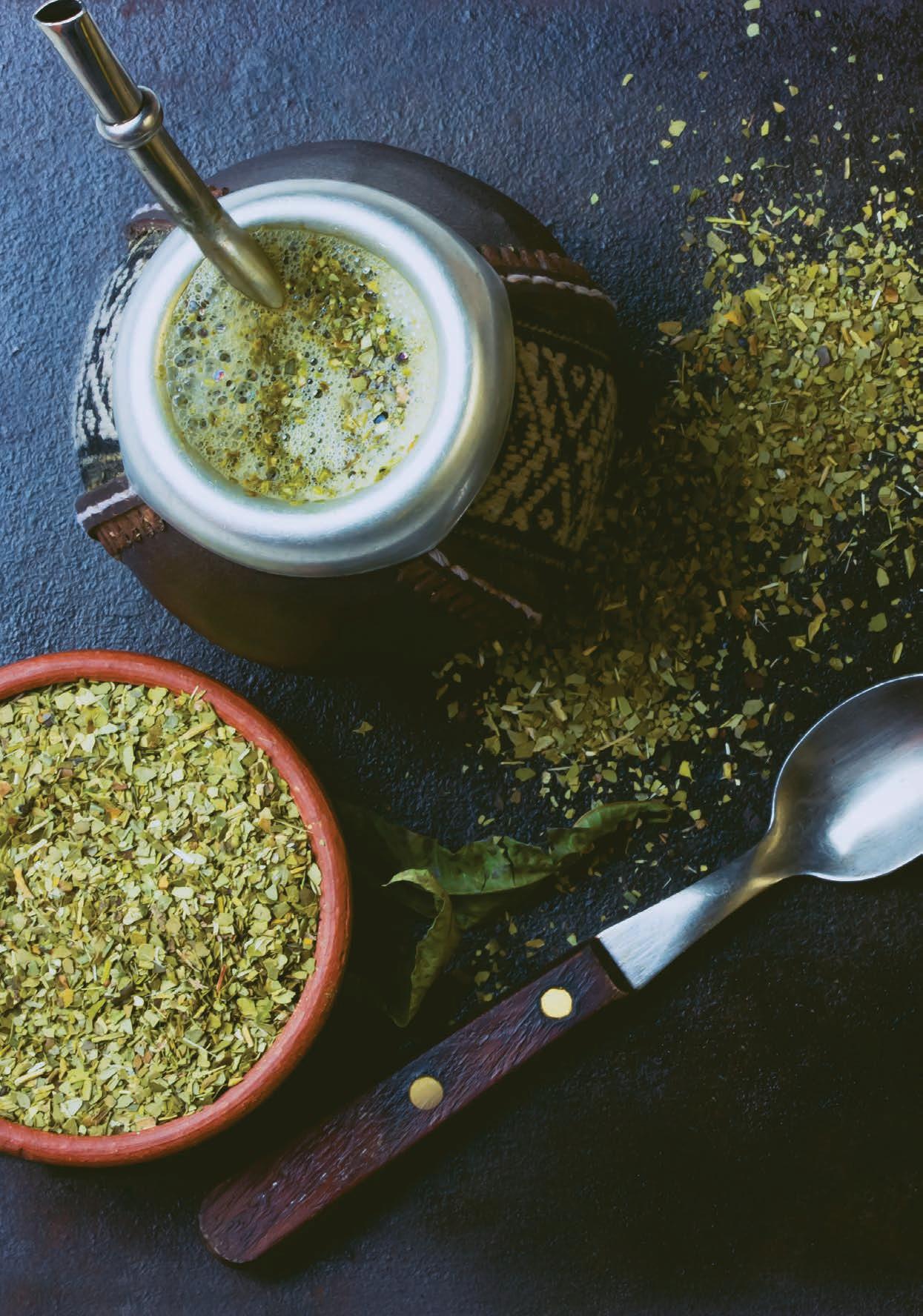
12 minute read
Lose weight
Mix up some herbs to get rid of obesity
Lose Weight
Advertisement
The most common cause of obesity and being overweight is the intake of unhealthy, unnaturally concentrated and artificially flavored meals. Obesity can also be brought about by a lack of exercise, an unhealthy diet, a lack of sleep, a healthy diet not appropriate for your physique, the side effects of certain medications, excessive stress, dependency on industrially treated foodstuffs, genetic predisposition or by a random combination of the mentioned factors.
obody needs to constantly count calories, run marathons or stick to unnatural dietary procedures to become slim. It is much more reasonable to improve your health by keeping a balanced diet and making better lifestyle choices. A long-term healthy lifestyle in reality means a healthy weight and body. Following unnatural diets leads only to alternating between dietary cures and overeating. N
OWN REGIME The most important rule for healthy living is to base the diet on consuming fresh meals made from natural foodstuffs. The best foods are natural, local and organic ones. Most importantly, you should cut food that is unhealthy, unnaturally concentrated or artificially flavored out of your diet. If you are eating healthy food and not loosing, but rather putting putting on weight, it is advised to calculate your physique type using Ayurveda or traditional Chinese medicine and then adapting your diet to your body type. It is possible that some people fail to reduce their weight even when they eat healthy food, but it is most likely because they eat food which is not beneficial to their body type. For example, eating an abundance of raw salads will not help you lose weight if you have a body type that tends to retain cold and/or dampness.
FOOD DEPENDENCIES Even though obesity is now connected to a lack of exercise, overeating, lack of sleep, low socioeconomic status, stress, or genetic predisposition, the question remains whether we gain weight because we keep overlooking one crucial factor – dependency. The intake of certain foods can lead to states of dependency akin to drug abuse. The effects of food
on the brain (or our psyche) is, in addition, a fairly uncharted territory – unlike the effects of edibles on our physical body, which has been the focus of scientific studies for decades. According to the international classification of diseases used within the European Union, addiction is a collection of behavioral, cognitive and physiological phenomena evolving from repeated use of a particular substance. Addiction typically consists of the following manifestations:
A strong desire to use the substance
Issues when controlling the use of the substance (concerning the beginning and end of the use or the amount of the substance)
Identification of tolerance – the need to increase the taken amount of the substance in order to have the same effects as at the beginning of taking it
Gradual negligence of hobbies to the benefit of the used psychoactive substance
Continued use even after obvious proof of the substance’s negative effect
Trials on animals have proven without a doubt that the intake of sugar meets all these characteristics. An excessive intake of sugar does not only increases one’s intoxication, but also intensifies the cravings for sweets. Sugar (similarly to cocaine, for example) affects the reward center in the brain and many biochemical mediators then signal the brain‘s desire for more. Sugar, apart from affecting brain cells, also raises the production of insulin, and a spike in insulin levels can lead to a whole array of health issues, such as irritation, sped-up aging, high blood pressure or increased fat depositing. Testing on animals also proves that sugar is a highly addictive substance, much more so than, for example, caffeine. We do not give caffeine to children, but it‘s still perfectly normal to give them sweets as a reward for good school results or at the doctor’s.
A SUGAR DETOX Whether it be alcohol, cocaine or sugar that we are addicted to, the problem is effectively the same. The substance we have developed a dependency on is as risky to the same extent as all the others, even if each of these affect another organ or system in the body. All of them lead to very similar biochemical processes in the brain. It is well established that acute exposure to many addictive substances produce increases in dopamine, or the “reward hormone”. Apart from increasing the release of dopamine and adrenaline addictive substances build a so-called memory imprint, which grows every time we consume the substance. Once the memory imprint has been created any other consumption of the particular substance leads to the need for further doses.
The memory imprint is difficult to get rid of even after years of abstinence. To cover a cake made for a child in cocaine powder is rightfully punishable by law due to the fact it creates dependency, while covering pastry in sugar is a sweet treat for even very young childern and is still very common. There are huge differences in reactions people have to these substances, and as yet, we are not able to precisely predict what reaction somebody may have. For this reason, according to the authors of a study conducted at the University of Californian, the government should try out restrictions on sugar, which it already has successfully applied in the areas of alcohol and nicotine.
A DONUT OR A CARROT? The worst foodstuffs are usually the ones that are the easiest to come by, and which are also often the cheapest. Dietary experts describe this situation as the “poisonous foods environment.” In such an environment it is practically impossible to walk through a city without being constantly tempted by fast food outlets. Moreover, a trip to the cinema seems incomplete without soda and buckets of popcorn, and even most pediatricians reward their young patients with sweets. When hot dogs are available on every main street and a plate of something healthy is hard to come by, what should we then opt for?
Popular slimming diets are often nutritionally inadequate; they function only for a limited amount of time, and I do not recommend them to anybody.
Nobody needs to count calories constantly, run marathons, eat only salads or skip meals in order to be slimmer.
The most important things to omit from your diet or at least minimize the intake of are unhealthy, unnaturally concentrated and artificially flavored industrially produced foods.
Give preference to natural produce and meals prepared from those.
The best drinks are water, water with lemon and a spoonful of honey, or teas. According to Ayurveda they can, in controlled amounts, activate the metabolism.
During a reduction diet it is advisable to reduce the intake of cold drinks and meals.
When cooking, don’t hesitate to add spices and herbs, as these also activate the metabolism.
At least at the beginning, or after any slip-up, note down the menu of the day, daily exercise and goals you have reached. Healthy nutrition needs to be supported by sufficient movement, sleep and being outdoors in the fresh air and sun.
WHY NOT EAT DIETARY FOODSTUFFS? Fashionable fad diets usually have very little to do with health, and dietary meals reduce our wallets more than anything else. The food industry welcomes special diets and new modern micro-nutrients, thanks to which it can constantly flood the market with new miraculous foodstuffs with a high price tag. It must be said that for the industry, the most profitable ready-to-eat foods are those made from the cheapest ingredients, which nowadays are mostly corn and soy in hundreds of variants – from concentrated fructose syrup to vegetable protein isolate. The cheap base is then enriched by some fashionable nutrient, or reduced by a nutrient that is recommended to be eaten in moderation, such as gluten, cholesterol or saturated fats. Advertisements and nutrition consultants paid by the industry will then advise us how healthy margarines full of trans fats are for us. Dietary foodstuffs are in reality often just highly industrially-modified products with a lower amount of whatever is deemed unhealthy at the moment. They contain more additives in order to make the created semi-product edible. In recent years a whole array of dietary miracles have appeared on the shelves.
LOW FAT YOGHURT FULL OF STARCH Low fat dairy products were a reaction to the statement that it is necessary to eat less animal fat and cholesterol. During their preparation, after homogenization and pasteurization, milk fat was usually removed, and along with it vitamins A and D, both soluble in fats. It was also customary to add dried milk, containing oxidized cholesterol (the one which seriously damages the veins). Other common additives were sugars and starch – nutrients we consume excessively and which, if present in abundance, efficiently transform into fat reserves in our bodies. In fat-free milk there is a much lower amount of healthy short-chain fatty acids. Included among these are palmitic acid, which limits the risk of insulin resistance (the base for diabetes) and conjugated linoleic acid, which significantly reduces the risk of cancer. The results are semi-products with excessive sugars
and oxidized cholesterol, poor in healthy nutritional fats and vitamins, which feed nobody and have no taste unless artificially flavored. Fats naturally present in food in fact provide flavor and a longer feeling of fullness! Without them we become hungry faster, and whatever substitute we are eating has no taste. For this reason, people on a diet constantly munch and are neither full nor happy.
UNHEALTHY DIA-CHOCOLATE For the correct utilization of glucose, we need insulin, which is lacking during diabetes, and for this reason fructose has been used to sweeten food for diabetics for years. However, nowadays we know that concentrated fructose changes into fats in the liver and its abundance in our industrial food production era is responsible for the increasing numbers of obese people and individuals with liver steatosis. They have developed these illnesses by drinking sweetened lemonades and dairy cocktails with concentrated corn syrup, which has fructose at its base rather than alcohol.
DIET COKE LEADING TO WEIGHT GAIN With the goal of decreasing their calorie count, many unhealthy drinks are sweetened by artificial sweeteners instead of sugar. In reality, no studies exist to confirm that the consumption of these dietary beverages helps weight loss. On the contrary, studies claiming otherwise are piling up. Artificial sweeteners, according to these studies, disrupt appetite control and their consumers take in more calories overall than consumers of the same drinks with sugar. Another study found a connection between regular consumption of dietary beverages and an increased risk of heart failure and strokes. More studies confirmed that aspartame decreases insulin sensitivity more than sugar does. Some of these works connect its intake with a higher amount of tumor diseases, such as leukemia and lymphomas.
CURIOSITIES ABOUT WEIGHT-LOSS DIETS Sticking to diets means following nonsensical reduction regimes, severely limiting of the amount of food eaten, and eating dietary absurdities in place of real foodstuffs. Some studies show that such behavior is a consistent indicator of future weight gain. It is difficult to stay on a diet long-term, because it is not
pleasant and also leads to feelings of deprivation. Moreover, no temporary diet can ensure a long-term effect. Sticking to diets can restrict the intake of essential micro-nutrients and the outcome can be a nutrient deficiency or feeling irritable.
Rapid weight loss leads to a hormonal imbalance, which in turn leads to an alarm reaction of the organism as it tries to reach its original state. Biochemically, an extreme drop in leptin levels follows, and this is the hormone responsible for the control of energy and appetite. The function of the thyroid lowers and the whole metabolism weakens. Forget diets and dietary foodstuffs: the base for a healthy body and weight are natural, quality ingredients and meals prepared from them. This can include buckwheat, chocolate or bread with butter. For ensuring one’s health, nobody needs to consume any semi-products with low fat, low calorie or low cholesterol label. The only things that should be excluded from food are chemicals, additives, leftover pharmaceuticals and pesticide residue. The healthiest produce grows in quality soil, without having pesticides sprayed over it, and comes from well-fed and well-treated animals.
FOODSTUFFS TO WARM YOUR BODY
Foodstuffs supporting metabolism and weight loss in winter
Cereals: wild rice, peeled barley, oats, buckwheat Legumes: soy Fruit and vegetables: egg-plant, cabbage, onion, garlic, leak, carrot, cherries, grapes, apricots, strawberries Dairy: goat cheese, goat milk Other: seaweed, sea salt, mineral waters, cocoa, cocoa milk Meat: chicken, lamb, goat, pheasant Fish: salmon, mussels, lobster, eel, tuna, trout, sardines Spices: chilli, fennel, nutmeg, clove, pepper, cinnamon, rosemary, ginger, licorice
I AM EATING HEALTHILY, WHY AM I NOT LOSING WEIGHT?
Sticking to diets – the natural metabolic needs of the organism decrease with age. In simple terms this means that to keep slim we need to gradually eat less or move more. A problem arises if we have been trying out unnaturally limited food intake, varied diets, or meal skipping since our twenties. This only serves to quicken the natural decrease of the organism.
Everyday stress – as a part of the body’s natural reaction to stress, aside from many other biochemical changes, cortisol is released in increased amounts. Among the effect of this hormone is the reduction of muscle, possible worsening of insulin dependence and the boosting of fat reserves in the belly area.
Unconscious eating – we only crave something small and sweet. We eat at night or, in place of healthy oatmeal we munch on an unhealthy muesli bar full of sugars and coated with a fatty topping. For this, only noting down in detail all we’ve eaten helps.

Herbal Flush Licorice is an antioxidant. It reduces toxins in the body and cleanses the liver. It lowers cholesterol, destroys Helicobacter pylori (a possible cause of stomach ulcers) and helps reduce fats. It can also serve as a natural sweetener.
Tea for metabolism acceleration
Ingredients: 0.5 oz dandelion root and leaves, 0.5 oz buckthorn bark, 0.5 oz licorice root, 0.5 oz heartsease
Preparation: Soak a spoonful of said mixture in 0.3-Gal cold water and let it brew for 3 hours. After this let the mixture heat up and reach the boiling point, then put aside and cover for 15 minutes. Use 2 spoons of the liquid per day.












